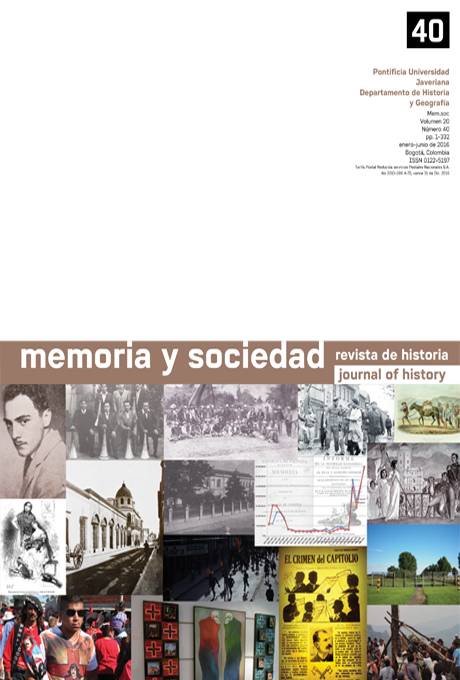Resumen
En octubre de 1914 cae asesinado en Bogotá
el político liberal Rafael Uribe Uribe. Un año
después, los Hermanos Di Doménico, pioneros
del cine colombiano, realizan la película
El drama del 15 de octubre, obra que recreaba
los sucesos más importantes del cruento delito,
y en la cual participan Leovigildo Galarza
y Jesús Carvajal, los homicidas del dirigente.
Para el cine colombiano en su periodo silente,
el filme significa una de las apuestas más significativas
y riesgosas en su historia cinematográfica,
teniendo en cuenta las situaciones que
soportó la exhibición de la película en acciones
de boicot, crítica y censura, lo que en últimas
trajo consecuencias lamentables para su
preservación como obra de valor patrimonial
audiovisual. El propósito de este artículo es
poner en conocimiento los pormenores de una
obra políticamente incorrecta para el momento
de su realización, resaltando, a través de diversas
fuentes, cómo nuestra historia del cine
se enmarca con impacto ante narraciones documentales
que mezclan realidad y ficción en
el acontecimiento social de una vida pública en
el contexto nacional.
La revista Memoria y Sociedad se encuentra registrada bajo la licencia Creative Commons Reconocimiento 4.0 Internacional. Por lo tanto, esta obra se puede reproducir, distribuir y comunicar públicamente en formato digital, siempre que se reconozca el nombre de los autores y a la Pontificia Universidad Javeriana. Se permite citar, adaptar, transformar, autoarchivar, republicar y crear a partir del material, para cualquier finalidad (incluso comercial), siempre que se reconozca adecuadamente la autoría, se proporcione un enlace a la obra original y se indique si se han realizado cambios. La Pontificia Universidad Javeriana no retiene los derechos sobre las obras publicadas y los contenidos son responsabilidad exclusiva de los autores, quienes conservan sus derechos morales, intelectuales, de privacidad y publicidad.
El aval sobre la intervención de la obra (revisión, corrección de estilo, traducción, diagramación) y su posterior divulgación se otorga mediante una licencia de uso y no a través de una cesión de derechos, lo que representa que la revista y la Pontificia Universidad Javeriana se eximen de cualquier responsabilidad que se pueda derivar de una mala práctica ética por parte de los autores. En consecuencia de la protección brindada por la licencia de uso, la revista no se encuentra en la obligación de publicar retractaciones o modificar la información ya publicada, a no ser que la errata surja del proceso de gestión editorial. La publicación de contenidos en esta revista no representa regalías para los contribuyentes.


